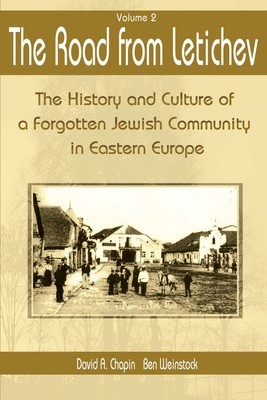
- We will send in 10–14 business days.
- Author: David a Chapin
- Publisher: iUniverse
- ISBN-10: 0595006671
- ISBN-13: 9780595006670
- Format: 15.1 x 23.2 x 3 cm, softcover
- Language: English
- SAVE -10% with code: EXTRA
Reviews
Description
The Road from Letichev presents the history of the area through the eyes of individuals who lived there. The Letichev District (Podolia) of Ukraine was a microcosm of Jewish life in Eastern Europe. It was the home of the Baal Shem Tov and the cradle of the Chasidic movement. This book is, in part, dedicated to the 300th anniversary of his birth.
The book's purpose is to document what was destroyed in the Holocaust. Although the Soviet experience in the Holocaust is relatively rare in modern literature, no understanding of the Holocaust is truly complete without an understanding of what the Nazis took away from the world. Through the testimonials from survivors of the Holocaust we learn new information about the horrors of the Nazi occupation on Soviet soil.
Interwoven into the fabric of Jewish life are songs, food, folklore, health, education and crime. The best description of a Jewish agricultural colony to date is detailed. On a tragic note, new information is provided on the 1648 Khmelnitsky massacres, as well as the pogroms of 1882, 1903-7, and 1919-21.
EXTRA 10 % discount with code: EXTRA
The promotion ends in 18d.17:54:47
The discount code is valid when purchasing from 10 €. Discounts do not stack.
- Author: David a Chapin
- Publisher: iUniverse
- ISBN-10: 0595006671
- ISBN-13: 9780595006670
- Format: 15.1 x 23.2 x 3 cm, softcover
- Language: English English
The Road from Letichev presents the history of the area through the eyes of individuals who lived there. The Letichev District (Podolia) of Ukraine was a microcosm of Jewish life in Eastern Europe. It was the home of the Baal Shem Tov and the cradle of the Chasidic movement. This book is, in part, dedicated to the 300th anniversary of his birth.
The book's purpose is to document what was destroyed in the Holocaust. Although the Soviet experience in the Holocaust is relatively rare in modern literature, no understanding of the Holocaust is truly complete without an understanding of what the Nazis took away from the world. Through the testimonials from survivors of the Holocaust we learn new information about the horrors of the Nazi occupation on Soviet soil.
Interwoven into the fabric of Jewish life are songs, food, folklore, health, education and crime. The best description of a Jewish agricultural colony to date is detailed. On a tragic note, new information is provided on the 1648 Khmelnitsky massacres, as well as the pogroms of 1882, 1903-7, and 1919-21.


Reviews